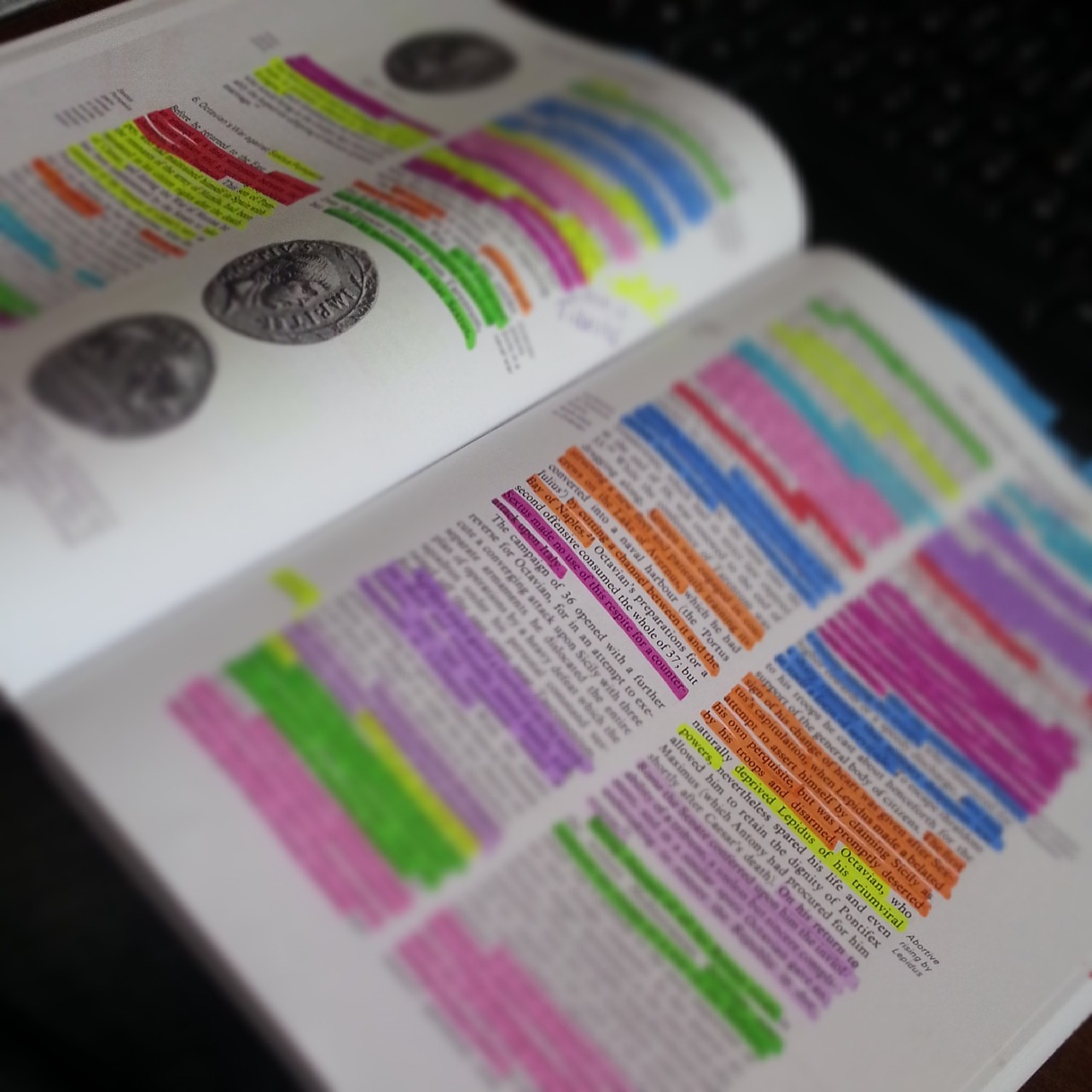 Of late, much of my time (and that of others) has been spent thinking through the evolution of ebooks.
Of late, much of my time (and that of others) has been spent thinking through the evolution of ebooks.
Yesterday, a colleague I work with, Peter Krautzberger — who heads up the MathJax initiative — pointed me to an informative, if poorly written, post by Robin Good. It was entitled Textbooks Show Aging Signs: Curated Guides Are Next. The piece is somewhat messianic in its approach to open source materials. In my view, this approach clouds judgement when it comes to innovation. I have nothing against considering open source innovation as a part of the puzzle, but to me at least, conflating innovation and discussion of open source models is akin to considering scientific question from the point of view of a belief system rather than as an empiricist. When I read a piece like this, I experience a range of reactions. On the one hand I am excited about the potential of curation in education. On the other hand, especially in math, I do not see any less of a need for a textbook, especially one that allows an author to provide their view into the field. It is not just facts that enables effective learning, but the voice and vision of an author that can stimulate a student’s imagination and guide them through a subject.
Having said this, there is most definitely a role for a curated, remixing approach to developing next generation textbooks. Good’s post is informative because he collates a set of links that describe the range of projects underway that take this curated approach to learning. A particularly interesting recent read on open educational resources (OER) may be found in the survey “Opening the Textbook: Educational Resources in U.S. Higher Education, 2015-2016” by I. Elaine Allen and Jeff Seaman of the Babson Research Survey Group. Their summary is as follows:
Most higher education faculty are unaware of open educational resources (OER) – but they are interested and some are willing to give it a try. Survey results, using responses of over 3,000 U.S. faculty, show that OER is not a driving force in the selection of materials – with the most significant barrier being the effort required to find and evaluate such materials. Use of open resources is low overall, but somewhat higher for large enrollment introductory-level courses.
So what do we mean when we talk about curation, and indeed personalization of content? Essentially, this approach, which has been simmering for many years, provides an instructor with the opportunity to tailor content to students depending on needs. McGraw Hill has been doing this for some time with McGraw Hill Create. However, remixing immediately raises questions about what exactly can be remixed with permission. Thus, many of the curation and remixing tools available must rely on copyright free material, or material created under an appropriately forgiving Creative Commons license.
Most academics who teach do not have a lot of spare time. Many institutions use Blackboard as their online education platform. Professors are already curating materials for teaching to their students utilizing Blackboard tools, customizing the learning experience. Instructors can decide what level of complexity they want to embrace in the platform for their teaching, but it is a ton of work – extra work – and the value needs to be demonstrable. A teacher can decide to post whatever they can under terms of fair use in a basic form of curation. But here lies one of the most difficult pieces of the puzzle. How many academics know exactly what constitutes fair use when posting materials for their classes? I suspect that not many teachers give that much thought to investigating carefully what constitutes fair use of content. One can’t help but sympathize with them as navigating these boundaries takes time and energy. This is where open-source curated textbooks perhaps fulfill a role.
An interesting example is Flat World Knowledge, recently re-branded as Flat World. Rumor has it that they are in the process of being sold, having failed to live up to the expectations of investors. Having said that, Flat World, which bills itself as the “World’s largest publisher of free and open college textbooks” has developed an interesting business model. How does it work? Well, instructors can take any of the Flatworld books and alter them as needed. They can take materials out, add materials in, include links to other materials, insert videos etc. Student have a range of options available. They can see the book through an online reader for free, or they can pay to add note-taking and highlighting, and even derived flash-cards for revision. If they pay more at the highest level of access, they can download a PDF for printing, or for download to an iPad, or Kindle and other devices, or even purchase a black and white, or color version of the printed book. The success of this sort of venture lies in having enough scale. Apparently there are over 250,000 students using Flat World content, however, at present there appear to be only around 110 titles across different fields of study with a focus on business studies – so this needs to grow.
In Good’s post there are a number of resources to explore and it is worth taking some time to look through the links
Another important consideration amidst the excitement of online innovation for students is whether students really want to read a book in an online form. Does a student want an online experience, a print experience, or both? An interesting view on this can be seen in Naomi Baron’s book, Words Onscreen: The Fate of Reading in a Digital World, published in 2015. Baron is Professor of Linguistics and Executive Director of the Center for Teaching, Research and Learning at the American University in Washington, DC. She writes eloquently on this topic and includes results of a study that made some headlines in early 2016. She asked 300 college students in the US, Slovakia, Japan and Germany how they prefer to read. Assuming that print and ebooks cost the same, she found that 87% of undergraduate and graduate students prefer print books over ebooks for school use.
What are the takeaways? Publishers looking to produce textbooks, at a range of levels, need to incorporate more flexibility for both the instructor and the student, bearing in mind such factors as interactive features such as video, audio, computer simulations and so on, as well as strong annotation and navigation components, with elements of curation available through customization techniques. But in all the excitement in the potential of ebooks do not ignore the print – there is value in both forms.
Is curation the future? I am really not sure and would value your thoughts on this. Personalization of content to the user, be it a student, or researcher, has generally fallen fairly flat commercially. It takes time and energy and the pay-off is generally low. Future gazers routinely look to the power of web tools to place power in the hands of the end-user, but complexity along with an overwhelming overload of choice often tends to have the reverse effect. In the end we want life to be simpler, not more complicated, and having others do the work for you is always going to be more appealing. But then again, work and social life is now all about curation. Perhaps the point here is that we love curation, we just want someone else to do the work.
Discussion
13 Thoughts on "Curation Nation: Thoughts on the Future of Textbooks"
Flat World announced recently it is selling off its textbooks to focus, I presume, on its platform.
According to The Chronicle, Flat World dropped free student access years ago: http://chronicle.com/blogs/wiredcampus/flat-world-knowledge-to-drop-free-access-to-textbooks/40780
All of those FlatWorld text books available in 2012 were CC-BY-NC licensed and are now archived here: http://2012books.lardbucket.org Note that all identifying elements have been removed by request of the publisher.
There seems to be a puzzling ambiguity here, regarding curated content. Textbooks and collections of readings have fundamentally different logical structures. A textbook is an intricate system of ideas, an issue tree in fact. (Re issue trees, see my little intro: https://scholarlykitchen.sspnet.org/2013/07/10/the-issue-tree-structure-of-expressed-thought/.) A textbook systematically builds the core concepts, examples, procedures, etc., that define a topic. A Kuhnian paradigm on a plate, as it were. Curated collections do not do this.
On the other hand, if the curation idea is to build a textbook by weaving together found pieces, rather than by writing it, that is a large challenge indeed, possibly greater than simply writing the entire book. I cannot see wanting a lot of people to do this. There are great economies of scale to having many classes using the same textbook, where the economy is that of scholarly time, a truly scarce resource.
Hello David
I went back to your Scholarly Kitchen ‘issue tree’ article referenced above and discovered that links in that article – and related articles – that referenced the OSTI website do not resolve to the content indicated. In one case that leaves a blank space where an image ought to be. Looking at the archive of blog articles, it seems that your material published on OSTI has been…um…de-curated. So you might want to make it available somewhere else if you retain the copyright.
Fair use is not the only part of copyright law that applies here. The Teach Act was passed specifically to apply to educational course use of online materials.
Hello Robert,
thank you so much for your honest feedback and criticism to my article on the future of academic textbooks. Although I am not a native English speaker I have no excuses for bad writing and having read your comments I have taken some extra time to look through and improve my writing in this article. Thanks for pointing that out.
Re: “On the other hand, especially in math, I do not see any less of a need for a textbook, especially one that allows an author to provide their view into the field. It is not just facts that enables effective learning, but the voice and vision of an author that can stimulate a student’s imagination and guide them through a subject.”
I agree 100%. I am not suggesting to drop textbooks. I am pointing to the fact that multiple viewpoints, explanation approaches and different ways to look at the same issue, can be of great help to many students in grasping the matter at hand. So, while this should be the key task of a teacher, reality shows that it is only a small minority of teachers and professors who have the communication skills, charisma and sufficient empathy to do this effectively.
@David Wojick – “A textbook systematically builds the core concepts, examples, procedures, etc., that define a topic. A Kuhnian paradigm on a plate, as it were. Curated collections do not do this.”
I don’t think this is definitive. There is a starting point for everything. Curated contents, in my experience can at times weave a much better storyline and can provide so much better context and complementary info that the final result is much better than any classic single-author text.
I also agree that textbook curation is a challenging, difficult and time consuming process that only a few passionate educators will want to take on. This has been the case for any challenging endeavour throughout history. Most think it is too difficult or crazy to do it, until there are enough skilled explorers who, with their achievements show that what was once considered too difficult is in the reach of many more.
It sounds like we do not disagree, Robin. One can certainly weave collected materials together to create a textbook structure. My point was that it is a big job and you seem to agree.
Beyond that I have a research result that may be of use here, namely a taxonomy of 126 confusion causing factors in expository writing, presented here: https://scholarlykitchen.sspnet.org/2013/02/05/a-taxonomy-of-confusions/.
As I explain, each person tends to be confusing in specific ways and confused in other specific ways. So one needs to use textbooks that are not confusing in the specific ways that one is most easily confused. My solution was to always use more than one textbook. But using a textbook that is constructed from many people’s writings might also minimize this coherence problem.
This comment/question is specifically for curating versus traditional textbook creation for K12. Is it possible for the standards (e.g., Common Core) to provide the needed coherence? Selecting K12 textbooks is like voting in the modern age, we pick the least of the evils. Ideally, publishers could figure out a permissions model that would allow schools to build a book of proprietary, open, and self-created content…one can dream.
The standards certainly provide the sequential framework of what is to be taught when, but that is about it. (I think you may mean NextGen as well, as there is no Common Core standard for science, just English and Math.) But the standards are very general, nothing like textbooks. States are now developing curricula for NextGen and then the schools and teachers will develop their lesson plans, which is where schools might also develop curated textbooks. It is not clear to me what the advantages would be in doing so, as it is a lot of work.
I think it is a bit disingenuous to decry the open evangelist and then say that fair use is too hard for most people. One of the benefits of open, public and Creative Commons licences is that they make it clear what you can ‘rip, mix, burn’.
While curation is time-consuming for individuals, it works really well as a community activity. And a supportive, creative community, open to diversity and free from ad hominem attacks, is a much more satisfying than a commercial client-publisher relationship. I would have thought that would be clear to a member-focused organisation like the American Mathematical Society.



